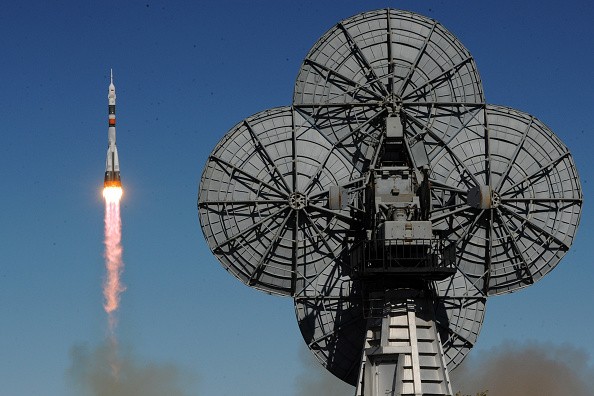ESA's new satellite constellation is currently in the works. This new space system is expected to track human-made greenhouse gas emissions, allowing researchers to know the Earth's current climate change status.

Russia's Soyuz MS-10 spacecraft carrying the members of the International Space Station (ISS) expedition 57/58, Russian cosmonaut Alexey Ovchinin and NASA astronaut Nick Hague, blasts off to the ISS from the launch pad at the Russian-leased Baikonur cosmodrome in Baikonur on October 11, 2018. (Photo by Kirill KUDRYAVTSEV / AFP)
If the new satellite constellation is proven effective, it could also be used to help government officials know the strategies they need to control the rising climate issue.
The European Space Agency is working with the European Union's Earth Earth-monitoring program, Copernicus, to develop the new constellation of satellites. They announced their innovation during the U.N. Climate Change Conference COP26 in Glasgow on Nov. 2.
ESA's new space tech would become handy once it is completely launched since carbon and greenhouse gas emissions still alarm various countries across the globe.
ESA's New Satellite Constellation
According to Space.Com's latest report, the new satellite constellation of the European Space Agency is called CO2 Monitoring and Verification Support Capacity or CO2MVS.

The burner from a SpaceX Falcon 9 rocket, carrying the Crew-2 mission astronauts, is seen near a star after lifting off from launch complex 39A at the Kennedy Space Center in Florida on April 23, 2021. - SpaceX launched its third crew to the International Space Station an hour before sunrise Friday, recycling a rocket and spacecraft for the first time. The Crew-2 mission, the first involving a European.
Also Read: NASA ISS Astronauts Harvest Hatch Chile in Orbit, Making Space Tacos In The Process
"These satellites will be able to observe the entire globe in just a few days," said one of the Copernicus officers via the agency's official blog post.
The representative added that the new satellite constellation also has the capability to analyze methane and carbon dioxide sources individually. These include fossil fuel production areas, as well as giant power plants.
ESA is just one of the space agencies currently trying to help solve Earth's climate and other natural issues. Recently, NASA discovered that one of the Antarctic Ozone Hole 13th Largest could remain until November.
Meanwhile, space researchers are also creating new ways to protect the planet, even from out-of-this-world threats. These include the proposed PI Method, which could destroy asteroids passing near Earth.
CO2MVS To Be Fully Functional by 2026
ESA's new CO2MVS constellation is expected to be launched by 2026. Various representatives of Copernicus also concluded that the new space tech would be completely operational by that period.
Compared to other greenhouse gas emission-detecting sats, the new satellites of the European agency are designed to offer wider planer coverage and more efficient methane measuring features. ESA claimed that CO2MVS could offer a more detailed database to represent the current greenhouse gases across the globe efficiently.
For more news updates about ESA's CO2MVS constellation and other similar space innovations, always keep your tabs open here at TechTimes.
Related Article: SpaceX and NASA's Crew-3 Mission Launch Delayed Again Until Nov. 6-Astronaut Medical Issue?
This article is owned by TechTimes
Written by: Griffin Davis









